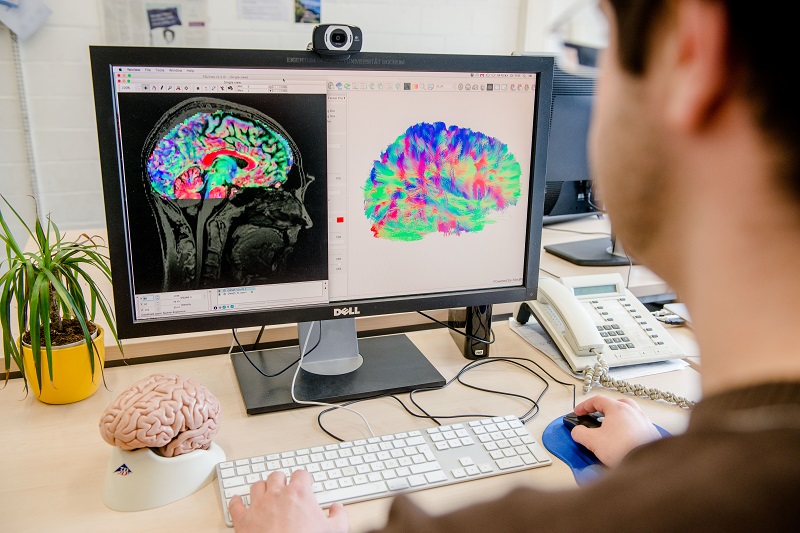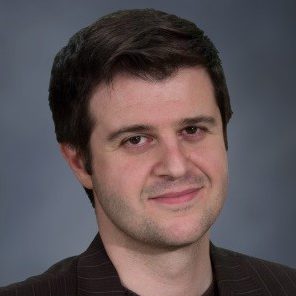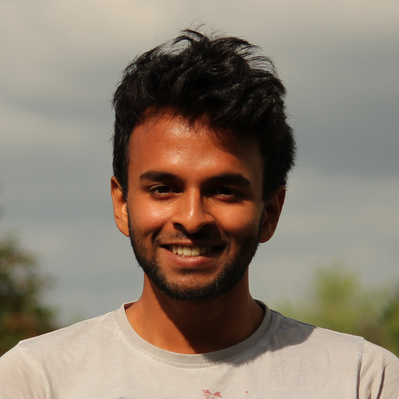
A03 – Functional role and dynamic change of extinction network connectivity
Erhan Genç, Nikolai Axmacher
Using advanced imaging methods in humans we will test how dynamic interactions between core regions of the extinction network shape learning. Here, we investigate how progress in fear extinction alters functional fMRI connectivity within the network. Simultaneous EEG/fMRI recordings will reveal the electrophysiological origins of these connectivity changes. Also, interindividual differences in learning outcome will be related to variations of pre-learning structural network connectivity. Finally, high-resolution fMRI recordings at 7T will uncover for the first time the importance of fine-grained functional and structural network interactions between distinct amygdala nuclei and other regions of the network on extinction learning.
Guiding questions of A03:
- How does rsfMRI and task-related connectivity of the extinction network change during and after learning?
- What is the electrophysiological basis of extinction network interactions in humans?
- Can inter-individual learning differences be predicted by pre-learning connectivity patterns?
- How do specific amygdala nuclei interact with the remaining extinction network during learning?

10 project-relevant publications
Bouyeure A, Pacheco D, Fellner MC, Jacob G, Kobelt M, Rose J, Axmacher N (2025) Distinct representational properties of cues and contexts shape fear learning and extinction. bioRxiv. 2024.12.16.628638. https://doi.org/10.1101/2024.12.16.628638
Chen S, Tan Z, Xia W, Gomes CA, Zhang X, Zhou W, Liang S, Axmacher N, Wang L (2021) Theta oscillations synchronize human medial prefrontal cortex and amygdala during fear learning. Science advances 7:eabf4198. https://doi.org/10.1126/sciadv.abf4198
Chhabra H, Ma Y, Genç E, Nitsche MA, Yavari F (2025) The physiological foundation of extinction improvement by tDCS over the ventromedial prefrontal cortex (vmPFC): An fMRI study. SSRN: abstract=5180197. https://doi.org/10.2139/ssrn.5180197
Fraenz C., Metzen D., Packheiser J., Merz C. J., Selpien H., Axmacher N., Genç E. 2020. Fear learning sculpts functional brain connectivity at rest beyond the traditional fear network in humans. bioRxiv 2020.05.26.115840. https://doi.org/10.1101/2020.05.26.115840
Fraenz C., Metzen D., Merz C. J., Selpien H., Friedrich P., Ocklenburg S., Axmacher N., Genç E. 2020. Multi-Modal Brain Properties are Associated with Interindividual Differences in Fear Acquisition and Extinction. bioRxiv. doi:10.1101/2025.04.05.647350. https://doi.org/10.1101/2025.04.05.647350
Genç E, Fraenz C, Schlüter C, Friedrich P, Hossiep R, Voelkle MC, Ling JM, Güntürkün O, Jung RE (2018) Diffusion markers of dendritic density and arborization in gray matter predict differences in intelligence. Nat Commun 9. https://doi.org/10.1038/s41467-018-04268-8
Genç E, Metzen D, Fraenz C, Schlüter C, Voelkle MC, Arning L, Streit F, Nguyen HP, Güntürkün O, Ocklenburg S, Kumsta R (2023) Structural architecture and brain network efficiency link polygenic scores to intelligence. Human brain mapping, 44(8), 3359–3376. https://doi.org/10.1002/hbm.26286
Ocklenburg S, Friedrich P, Fraenz C, Schlueter C, Beste C, Güntürkün O, Genç E (2018) Neurite architecture of the planum temporale predicts neurophysiological processing of auditory speech. Science Advances 4. https://doi.org/10.1126/sciadv.aar6830
Schlüter C, Fraenz C, Friedrich P, Güntürkün O, Genç E (2022) Neurite density imaging in amygdala nuclei reveals interindividual differences in neuroticism. Human brain mapping 43. https://doi.org/10.1002/hbm.25775
Schneider Penate JE, Gomes CA, Spisák T, Genç E, Merz CJ, Wolf OT, Quick HH, Elsenbruch S, Engler H, Fraenz C, Metzen D, Ernst TM, Thieme A, Batsikadze G, Hagedorn B, Timmann D, Güntürkün O, Axmacher N, Kumsta R (2025) Polygenic prediction of fear learning is mediated by brain connectivity. medRxiv. 2025.03.12.25323754. https://doi.org/10.1101/2025.03.12.25323754





